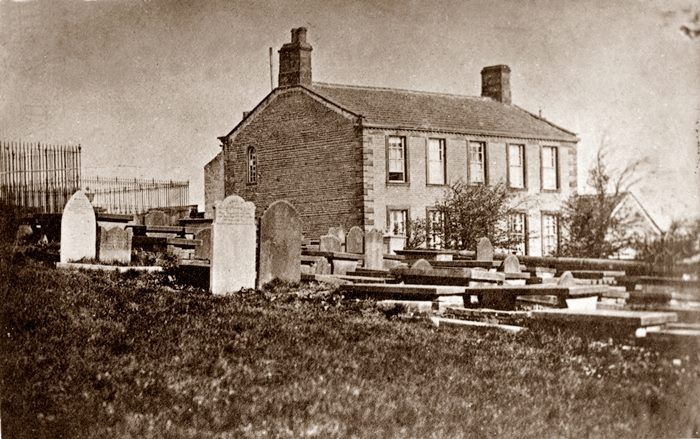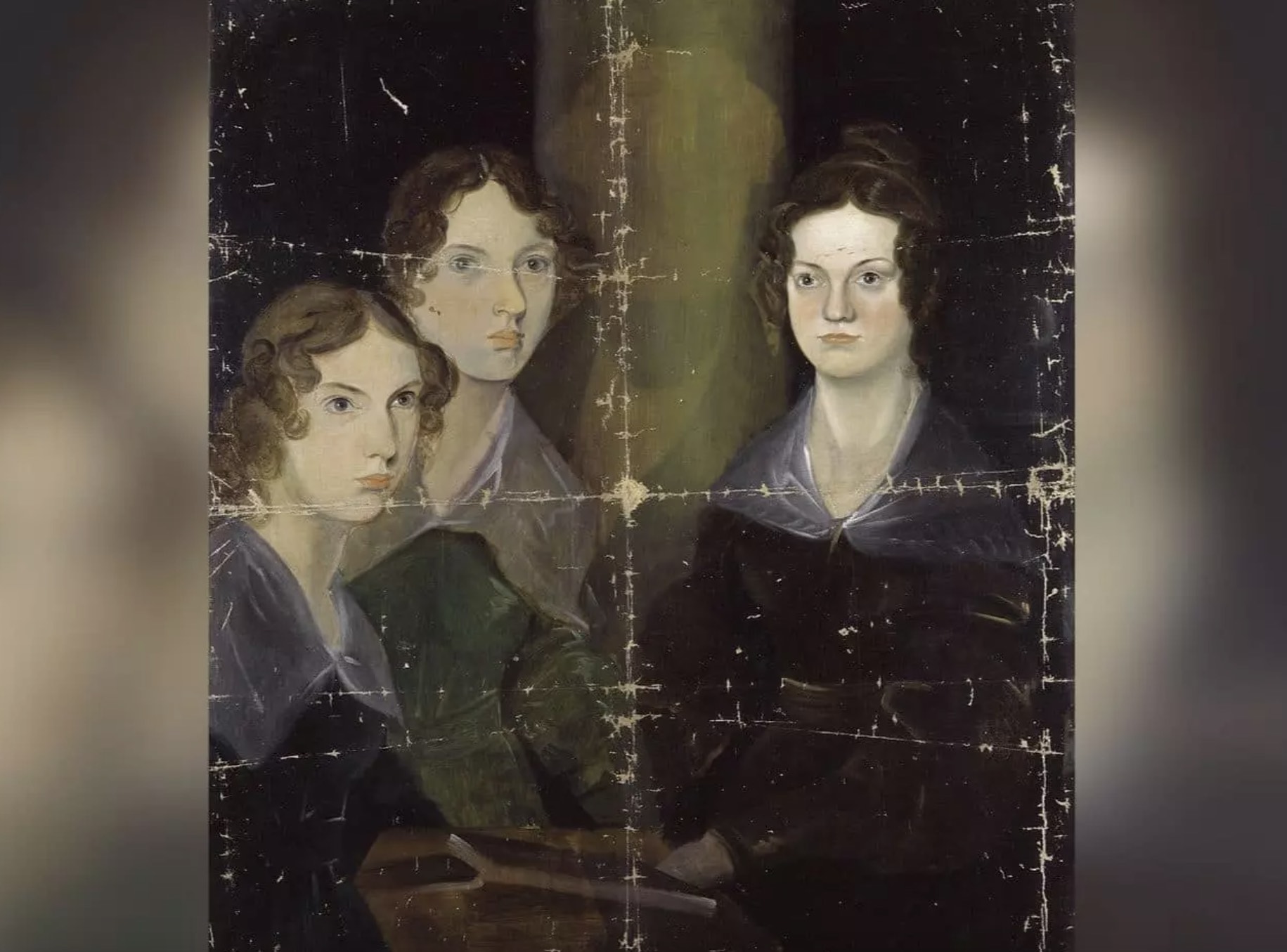
Part 1: The Shadow Over the House. How Tuberculosis Haunted the Brontë Family
Imagine an old stone house at the very edge of a gloomy Yorkshire graveyard. The air is damp and cold, with mists that linger long between the hills. There is no place for sunlight and joy here. It was in such an atmosphere that one of the most brilliant families in the history of English literature — the Brontës — lived.
Their story is not only one of brilliant novels but also of an endless struggle with an invisible enemy — tuberculosis. This disease literally "lived" in their home, becoming a silent and formidable participant in their fate.
The Beginning of Tragedy: The School That Killed
The head of the family, Patrick Brontë, was a poor rural clergyman. Like any loving father, he wanted a better future for his children. In Victorian England, for girls from modest families, the path was clear — to become a governess. And for that, education was needed.
The choice fell on the Clergy Daughters' School at Cowan Bridge. This decision, dictated by good intentions, turned out to be a fatal mistake. Conditions at the school were appalling: meager rations (undercooked potatoes and rancid milk), icy dormitories, unsanitary conditions. The children were constantly cold and hungry.
The elder sisters, Maria and Elizabeth, went there first. They were talented and intelligent girls, but their bodies could not withstand the harsh trials. They fell ill, weakened, and soon after returning home, died. Maria was 11 years old, Elizabeth — 10. Later, Charlotte would describe this nightmarish experience in "Jane Eyre," creating one of the most poignant images of the brutal Lowood School.
The Eternal Companion: Why Tuberculosis Wouldn't Let Go of the Family
After the first deaths, tuberculosis did not leave. It became a background condition for the Brontë family. Why did it cling to them so persistently?
Horrible living conditions: Their home in Haworth stood in a damp, unhealthy place right by the graveyard. Humidity and cold were constant companions.
Meager diet: The family's diet was sparse: potatoes, oatmeal, a little bread. There was often not enough money for meat, fresh vegetables, and fruits. This weakened their immunity, leaving the body defenseless against infection.
Chain reaction: In the 19th century, the contagious nature of tuberculosis was not fully understood. The sick were not isolated, and the infection was passed from one weakened child to another within the home.
Tuberculosis accompanied the Brontë family for decades, step by step taking the most talented children. It began with the deaths of Maria and Elizabeth in 1825 and did not cease until it claimed the last of the sisters, Anne, in 1849.
It would seem that in such conditions, creativity was out of the question. But paradoxically, it was this atmosphere of grief, isolation, and the fragility of existence that helped their unique talents to flourish. But more on that in the second part.

Part 2: Flowers on the Moor. How Geniuses Grew in the Brontë Family
Living in the constant shadow of illness and death is unbearable. But the Brontë family found salvation in this. Their home was physically isolated from the world: on one side — moors, on the other — a graveyard. The outside world was harsh and austere, so they created their own internal world, full of passions, dramas, and adventures.
Fertile Ground: The Atmosphere in the Brontë Home
Their father, Patrick Brontë, who loved literature and wrote poetry himself, created a unique environment for that era.
Cult of knowledge. He brought magazines to the children, and they had access to the best examples of literature: Shakespeare, Byron, Walter Scott. The Bible was a bedside book. This was their "university."
Freedom of creativity. Patrick allowed the children to read everything and, more importantly, to write about everything. For girls in Victorian England, this was a rare freedom — they could write without regard to conventions.
World of fantasies. Instead of ordinary children's games, the Brontë children created complex fictional universes — Angria and Gondal. They were the authors, historians, and poets of these worlds, recording their stories in tiny booklets that still amaze with their scale.
Their creativity became a cocktail of isolation, bookish education, and personal tragedies. They learned to express pain and loneliness through text, which gave their works incredible depth and power.
Three Sisters, Three Geniuses: Who is the "Best"?
The question often arises: who among the sisters was the most talented? It is impossible to answer because each was unique.
Charlotte ("Jane Eyre") — the most famous. She gave the world a story of resilience, moral strength, and the search for one's place. Her strength lies in psychology and social criticism. She was the "practitioner," the one who achieved recognition.
Emily ("Wuthering Heights") — the most brilliant. Her only novel does not fit into any framework. It is a wild, mystical saga of all-consuming passion and revenge, which shocked contemporaries and was appreciated only by descendants. She is called a genius for her absolutely unique, unparalleled imagination. Her poems are full of the same power and sense of eternity.
Anne ("Agnes Grey," "The Tenant of Wildfell Hall") — the bravest and most underrated. Her "Tenant" is perhaps the first openly feminist novel in English literature, where the heroine escapes from an abusive husband with a child, which was unthinkable for that time. Her style is honest, direct, and surprisingly modern.
So who is the best? Charlotte — for lovers of classics and strong heroines. Emily — for those seeking brilliant, dark, and poetic prose. Anne — for admirers of courage and social justice. They cannot be compared — they can only be admired together.
Epilogue: Could They Have Been Saved?
It is sad to read their story and realize that many deaths could have been avoided. Had the father not sent the elder girls to that fateful school, improved their diet, taken the sick Emily and Anne to the sea air earlier — the story might have been different. But the poor clergyman had neither the means nor the knowledge of the nature of tuberculosis.
Their tragedy is a product of its era, cruel and ignorant. But their legacy is a gift to all humanity, a reminder that even in the harshest conditions, the most beautiful flowers of creativity can bloom. They did not break under the weight of circumstances but gave the world their worlds, becoming eternal companions for millions of readers around the world.

Leave a comment
Comment